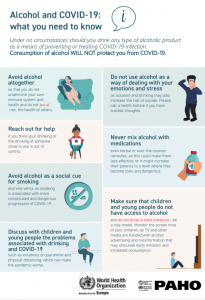Research has shown that women are by-in-large greater consumers of wine compared to men, with some wine producers estimating that 60 percent of their consumer base is women(Kennedy, 2018). This is in part due to women tending to by the primary grocery shopper for their household, but also due to the simple fact that some people enjoy the atmosphere associated with drinking wine(Kennedy, 2018). Given the current national effort to re-open various facilities and businesses, will wineries still be able to keep up with demand for wine? This blog will provide some insight into the current trends in the supply and production of wine as these are the basis for access to the alcoholic product.
Based on February 2020 reports from the U.S. Department of Treasury’s Alcohol and Tobacco Tax and Trade Bureau(TTB) the supply of bottled wine in the United States increased by over 8,000,000 bottles since February 2019(TTB, 2020). In contrast, the supply of bottled wine decreased by over 16,000,000 bottles from February 2018 through February 2019(TTB, 2020). To me this suggests that people are trending to drink less wine over the past 2 years and less wine may be being produced as demand decreases. Further reports by winery stakeholders in Washington and California confirm that they have an oversupply of wine and that overall consumer demand has been on the decline even prior to the current pandemic situation(McMillan, 2020). This decline in consumption could be due to the fact that the U.S. population that owns the most discretionary income, Baby Boomers, are entering their lives as elderly citizens(McMillan, 2020).
While millennials are consuming wine, they have not met the predicted consumption rates made by many wineries(McMillan, 2020). This could be attributed to generational differences in wine culture. Older generations may relate wine to expensive bottles from prestigious wineries from the Napa Valley as an example. Meanwhile, the millennial and younger generations may consider canned wines as a quality purchase in terms of cost and ease of access.
My interpretation of these findings is that given the lack of overall demand for alcohol wine companies are greatly incentivized to find creative ways to promote and move their products to increase consumption. Wineries may benefit from innovations in the design and packaging of their bottled products in ways that appeal to and capture the millennial and younger audience. A strength these stakeholders have to accomplish this goal is their access to a high supply of wine. More importantly consumers may be susceptible to new models of alcohol marketing and in turn increasing their risk for alcohol consumption.
References
- Kennedy, K. (2018, December 13). Women, especially millennials, are driving wine trends. https://www.chicagotribune.com/lifestyles/sc-fam-women-who-wine-0410-story.html
- Department of the Treasury Alcohol and Tobacco Tax and Trade Bureau.(2020, May). Wine Industry. https://www.ttb.gov/wine
- McMillan, Rob.(2020). Silicon Valley Bank: State of the US Wine Industry 2020. https://www.svb.com/globalassets/library/uploadedfiles/reports/svb-2020-state-of-the-wine-industry-report-final.pdf










